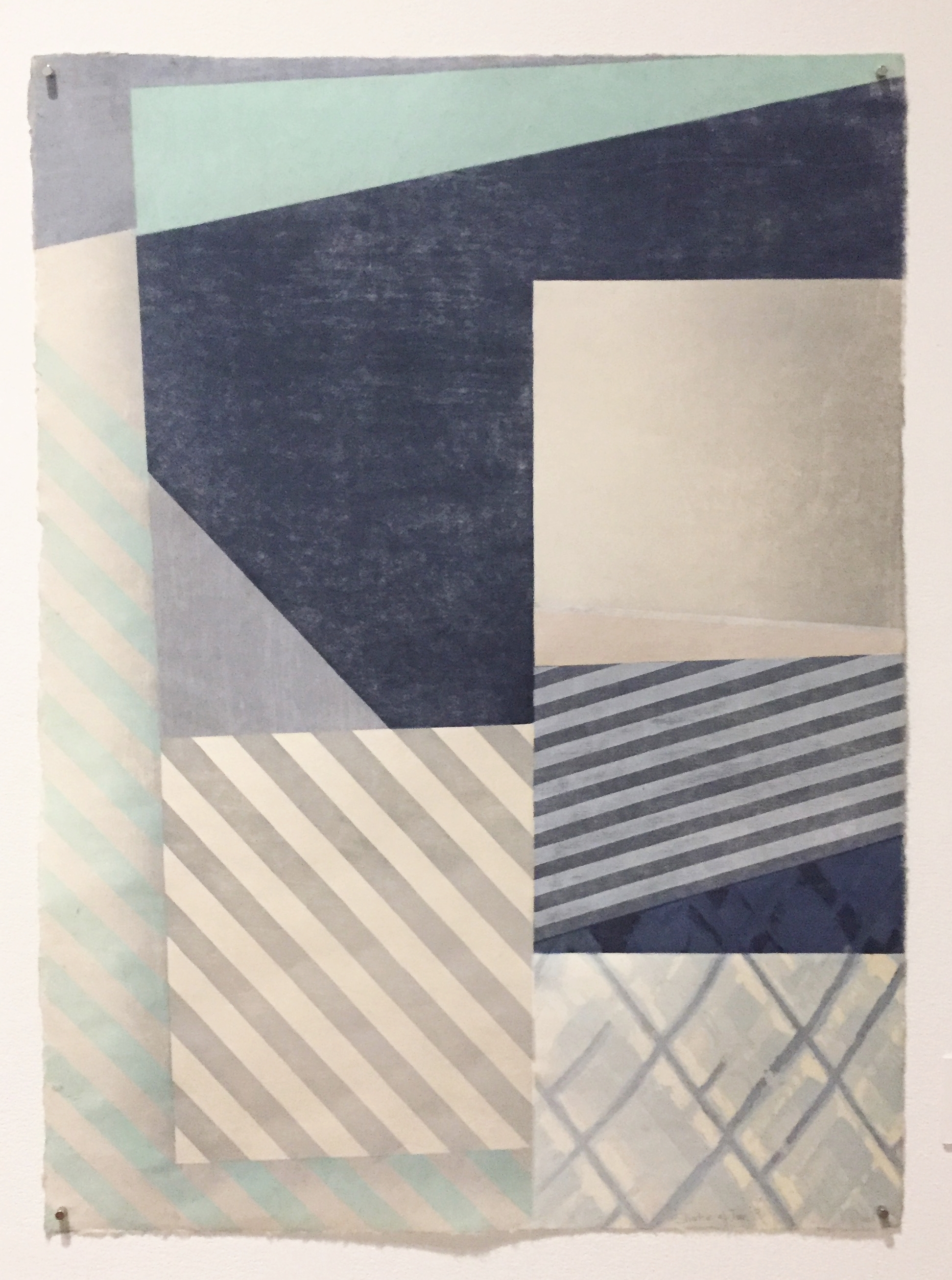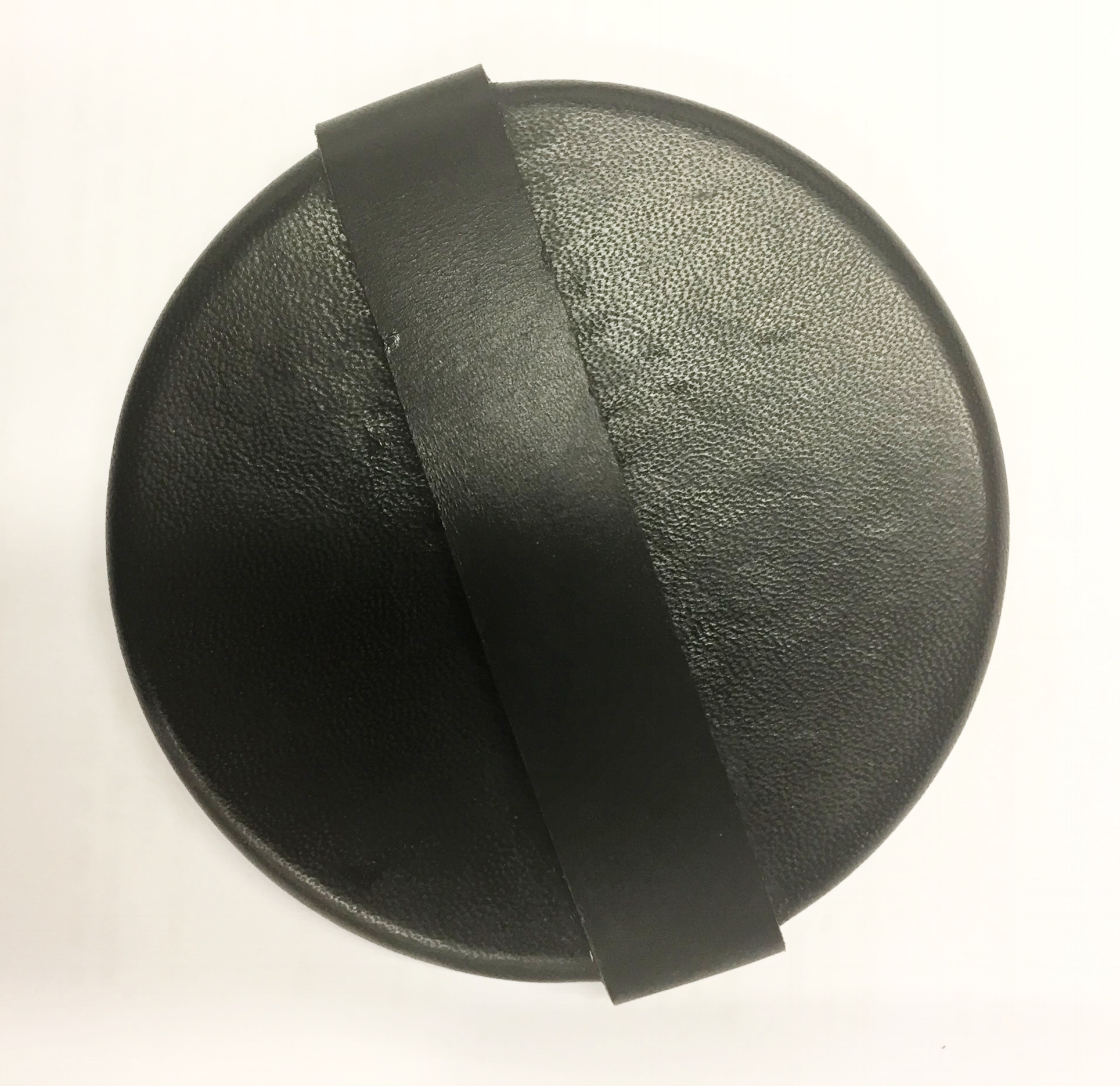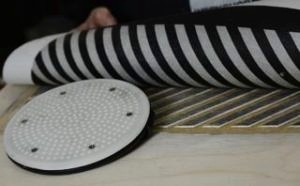I was recently at the International Mokuhanga Conference held at the University of Hawaii in Honolulu and was delighted to meet Roslyn Kean, a contemporary printmaker in Australia who uses traditional Japanese mokuhanga / woodblock printing techniques.
Roslyn Kean / mokuhanga print on exhibit at Beauty of Mokuhanga: Discipline and Sensibility
Roslyn has studied printmaking in Australia and the UK and did graduate research at the Tokyo National University of Fine Arts. During this time she focused on methods of traditional Japanese woodblock. She has been a practicing printmaker for thirty years.
I was fascinated that Roslyn has developed a new version of the traditional Japanese hand printmaking baren. Her Kean Ball Bearing Baren (KBB Baren) is well engineered, beautifully constructed and a pleasure to print with. Roslyn told me she knew what she wanted the barens to do and was fortunate that her husband is an engineer and could collaborate with her on the production details. These ball bearing barens are said to be comparable to HON Baren (Hon means genuine or real) and while a hon baren start at $1,000.00 USD, Roslyn's baren cost $175.00 (stainless steel ball bearings) and $185.00 (Delrin® ball bearings). Washi Arts will have these available in the United States in November 2017. You can pre-order to ensure you'll receive one from the intial order.
Roslyn Kean's Ball Bearing Baren / back
For the Kean Stainless Steel Ball Bearing Baren, click here.
For the Kean Delrin® Ball Bearing Baren, click here
Roslyn Kean has also created a masterclass available on DVD called "Mokuhanga: Tradtional Japanese Woodblock Printing. If you are not able to get to a workshop in your area, this DVD will give you a good overview of woodblock printmaking in the Japanese style. The DVD has nine chapters and runs 144 minutes. If you are in Australia, you can order the DVD from Roslyn directly, if you are in the US you can order from Washi Arts. To learn more, click here.
Roslyn Kean hand printed on Japanese washi / paper









































